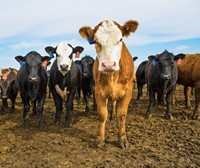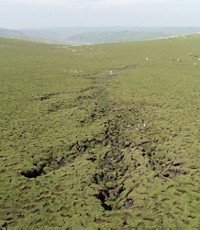Advertisement
Grab your lab coat. Let's get started
Welcome!
Welcome!
Create an account below to get 6 C&EN articles per month, receive newsletters and more - all free.
It seems this is your first time logging in online. Please enter the following information to continue.
As an ACS member you automatically get access to this site. All we need is few more details to create your reading experience.
Not you? Sign in with a different account.
Not you? Sign in with a different account.
ERROR 1
ERROR 1
ERROR 2
ERROR 2
ERROR 2
ERROR 2
ERROR 2
Password and Confirm password must match.
If you have an ACS member number, please enter it here so we can link this account to your membership. (optional)
ERROR 2
ACS values your privacy. By submitting your information, you are gaining access to C&EN and subscribing to our weekly newsletter. We use the information you provide to make your reading experience better, and we will never sell your data to third party members.
Agriculture
Air quality improvements boosted California’s agriculture industry
Lower ozone levels led to higher grape and almond yields—and decarbonizing the state’s economy could provide a further boost
by Katherine Bourzac
March 18, 2020
| A version of this story appeared in
Volume 98, Issue 11

Reducing air pollution saves lives and increases workers’ productivity. A new analysis of the yield of fruits, nuts, and other long-lived and economically valuable crops suggests that those benefits are much the same for plants.
The analysis of historical agricultural productivity, levels of unhealthy ground-level ozone, and temperatures in California shows that as air quality improved from 1980 to 2015, agricultural yields went up, producing more food and netting the state’s farmers billions of dollars (Nat. Food 2020, DOI: 10.1038/s43016-020-0043-8). The productivity boost was strongest for some of California’s biggest cash crops, including table grapes and almonds. And there are further gains to be made if the state reins in the fossil-fuel emissions that drive ground-level ozone production.
Most research on the effects air pollution and climate change on agriculture focuses on crops that are replanted each year, such as corn, wheat, and soybeans. These staple crops provide the majority of the world’s calories, and because they are annual plants that grow and mature quickly and are relatively inexpensive to replant, they can be bred or genetically engineered to weather environmental change.
But most of our nutritional needs are met by long-lived crops that produce fruits, nuts, and vegetables, says Chris Field, director of the Stanford Woods Institute for the Environment, who was not involved with the analysis. “These crops are increasingly seen as key to our health,” so it’s critical to understand how they are affected by pollution and climate change, he says. But it’s difficult to study them, in part because they are so diverse—worldwide, perennial plants produce almonds, asparagus, strawberries, coffee, and chocolate.
Perennials can live 20–30 years. “They may not be able to adapt as quickly or in the same way” to environmental change as annual plants, says Steven Davis, an environmental scientist at the University of California, Irvine, who led the new analysis. “Perennials are more vulnerable.”
In 2011, Field and collaborators analyzed the impact of temperature increases on perennial yields in California, and they found no strong trends (Clim. Change 2011, DOI: 10.1007/s10584-011-0303-6). Davis picked up from there to see if anything had changed during the intervening decade. He added air quality to the analysis because California’s ozone levels have dropped significantly since 1980.
Davis says he views this as a way to link agricultural productivity to California’s energy system, as the state works towards a goal of becoming carbon neutral by 2045. Ozone is formed by reactions in the atmosphere involving pollutants such as nitrogen oxides that are released when fossil fuels are burned. Davis wanted to know how decarbonizing the state’s economy might affect its agriculture industry through this ozone link.
“I was startled to see the magnitude of the impact,” particularly for grapes and stone fruits such as peaches, says Davis. “The improvement in ozone pollution has had a meaningful effect on crops.” High ozone levels cost table-grape farmers as much as $1 billion annually in the 1980s. Davis says his analysis suggests there’s room for improvement, particularly in the San Joaquin Valley, a major agricultural region where ozone levels remain relatively high.
Yields of most crops were not impacted by temperature increases predicted by climate change models. Almond yields, however, will fall 10% under a 2 °C average temperature increase.
Field is impressed by the strength of Davis’s team’s historical analysis. “This is a powerful way to extract subtle signals from the data and integrate across all perennial crops,” he says. However, he’s cautious about using past data to project future yields under climate change. Most crops are not very sensitive to a wide range of temperature variation, he says. “But then you hit some threshold where their response grows dramatically—and it’s hard to know where that threshold is,” Field says.





Join the conversation
Contact the reporter
Submit a Letter to the Editor for publication
Engage with us on Twitter